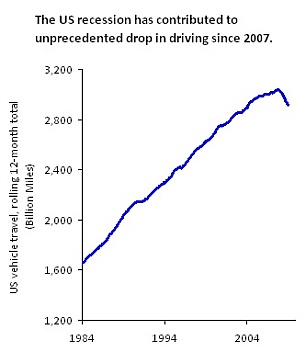
Here’s an interesting followup to last week’s post about about the uncertain links between recession and long-term climate change: Shakeb Afsah at Climate Data Due Diligence wrote to tell us that even though total carbon emissions from power plants fell in 2008, the carbon intensity of the power sector — that is, the amount of CO2 released per megawatt-hour of power produced — increased last year.
In the chart to the right, the yellow line at the top shows the tons of CO2 released per megawatt-hour of electricity produced by the nation’s power plants. And just as the recession kicked in in 2008, the CO2 intensity of the U.S. power system — which had been steadily improving for the previous four years — went in the wrong direction.
Ultimately, of course, it’s the total CO2 emissions that matter, not the emissions intensity. But it’s still somewhat disheartening to see the carbon-intensity trend move in the wrong direction, since it doesn’t bode well for the performance of the power sector once the economy recovers. After all, the climate crisis is a very long term problem; we need to make real, tangible progress in our emissions performance no matter what the economy does in the short term. And that puts an even bigger premium on making sure that we’re making the right kinds of stimulus investments while the economy is down: we want to be sure we emerge from the recession in a better position than we were when we went into it. That makes the carbon intensity figure one that’s worth watching.
This post originally appeared at Sightline’s Daily Score blog.



